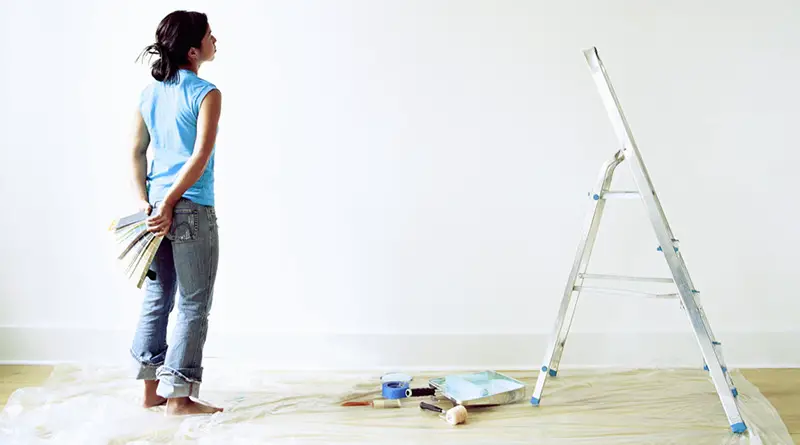Are you searching for the best tips on how to paint a wall yourself? If you are renovating your interior, painting your walls and ceilings is one of the best ways to improve the atmosphere. That said, here are a few tips to help you paint your walls and ceilings yourself.
How to Paint a Wall Yourself
Choose the Right Paint
There are several categories of interior paints that adapt to the different types of surfaces we encounter inside a house. For example, there are different paints for plaster, wood, and metal surfaces.
If you are painting plasterboard or wood partitions, water-based paints are very suitable. However, they do not allow a surface already treated with a glycerol paint to be covered.
In addition, for damp rooms such as the bathroom and kitchen, you should use a specific paint that will resist ambient humidity and water projections.
When it comes to bedrooms, we recommend an acrylic paint with a low VOC (Volatile Organic Compounds) content.
Finally, choose a matte paint for your ceilings that easily hides small imperfections.
Use the Right Material
You need different sizes of brushes and rollers for each type of media to be coated, and the final renderings you are looking for. Think about brushes for recoating (for corners and moldings), non-drip rollers, as well as a telescopic pole for ceilings.
Masking tapes, protective tarpaulins, tray with spinner, sponge, white spirit, stepladder, and protective suit are also essential before you set out!
Painting a Wall
Start by applying the masking tape to delimit the area to paint and the protective sheet on the ground. Then, you must first recoat, for example, paint the corners and edges with a special round brush. Further, wait for this initial coat to dry before you complete the assembly with a roller.
Paint m² by m² in vertical and horizontal strokes. If necessary, allow to dry before you apply the second coat.
Applying Paint to a Ceiling
You should protect the top of the walls with masking tape and then, in the same way as for the walls, remove the edges and corners with a paintbrush. Going on, as before, cross your passes using a non-drip roller.
For a faster outcome, it is better to use a telescopic pole rather than the stepladder. It is a quicker solution that avoids the constant back and forth on the stepladder.
Be Patient
It is important that you have patience when painting. Furthermore, make sure you organize your work area. That is because it would be a shame to spill a can of paint or stain a finished surface. Painting is a school of patience, so it is good to know how to bend to its constraints.
Conclusion – How to Paint a Wall Yourself
If you follow the above techniques, use the right material, and exercise patience, you will be able to give your interiors the colors they deserve.


